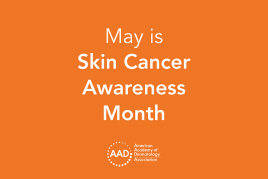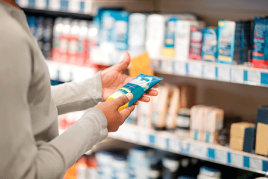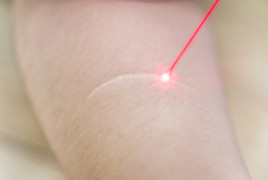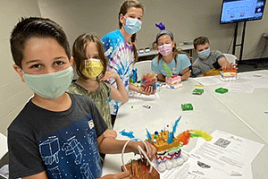Nail care: Introduction (ages 8-10)
Good Skin Knowledge lesson plan
Time: 30 min
Objective
Students should be able to:
State at least one “do” and one “don’t” for nail care
Identify the three parts of the nail
Materials
Pencils
Coloring utensils (crayons/markers/colored pencils)
Assessment
During Introduction to New Material, see if students can locate the different parts of the nails, as well as repeat them when s/he reviews.
During the Independent Practice, evaluate whether students are able to locate and label the different parts of the nail.
During the Closing, assess whether students have grasped the “Do’s” and “Don’ts” of nail care by reviewing the Do or Don’t worksheet.
Opening
3 minutes
Ask students, “Have your parents every told you to stop biting your nails before?” If students say “Yes,” ask why they think their parents say that or if they thought it really matters. If students are unresponsive or say, “No,” say, “Well, growing up, my parents always told me to stop. I didn’t really care or understand why, so I never listened.”
Ask, “Are nails really even important? Or do they just exist so we can paint them?! We are going to find out today.”
Introduction to new material
10 minutes
Materials: Nail Diagram worksheet
Tell students to look at their nails. If their nails are painted, they can raise their hands and pass out Nail Diagram worksheet.
Explain different parts of nails:
The area right under your nail has a little pocket called the matrix. “What’s it called?” (Students should repeat “the matrix”). This is a little pocket that keeps making new cells. When new cells form, they push old ones out of the pocket, or matrix. And by the time the old cells come out…they’re dead! Your nails are dead cells; that’s why it doesn’t hurt to cut them. “What’s the little pocket under the nail called?” (Students should respond “the matrix.”)
You may have heard about the cuticle. This part of your nail is the tiny sliver of skin around the nail. This protects the matrix from germs. Like a wall almost! Can you all see the cuticle? (Facilitator points at his/her ownand walks around room to show students.)
Lastly is the lunula—(loon-yoo-la.) Can you guys repeat that? (Lunula.) You might only be able to see it on your thumb. If you can’t see it at all, it’s ok! This is actually part of the matrix—the pocket under your nail that makes new cells and pushes out the old ones!
Ask if everyone has been able to locate the parts of the nail and reviews the three parts again with the students.
Explain, “By looking at your nail, doctors can sometimes tell if you are sick or healthy. It’s important to take care of your nails.”
Guided practice
10 minutes
Materials: Nails. Do or Don’t worksheet, pencils
Pass out Nails. Do or Don’t worksheet.
Go through each question with student and explains why each is a Do or Don’t.
Keep your nails really long: (DON’T.) We should keep our nails short and clean. If we have long nails, more germs can collect under them and you can get an infection.
Eat a healthy balanced diet: (DO.) This helps keeps your nail strong.
Rub lotion on your nails: (DO.) Helps keep your hands and nails moist!
Use nail polish remover more than twice a month: (DON’T.) Nail polish removers have chemicals that are very harsh on your nails that can dry them out.
Push back your cuticles: (DON’T.) Remember the cuticle is the tiny sliver of skin around your nail, so you need to be gentle with it. If you push it back or cut it, the nails can get infected.
Make sure your nails are clean: (DO.) Keeping clean nails helps prevent infection and keeps them healthy.
Bite your nails: (DON’T.)
Nail biting can make the skin around your nails bleed and make your fingers sore.
You also have a lot of germs under your nails, and you might cause an open sore to form letting all those icky germs in.
Nail biting is also bad for you teeth. It could even cause a gum infection! Then you’ll have to go to the doctor and the dentist.
Independent practice
5-10 minutes (varies; can also take home if out of time)
Materials: Nails. Do or Don’t worksheet, coloring utensils
Hand out Nail Diagram worksheet to students.
Explain that the three parts of the nail are on top: Matrix, Cuticle, and Lunula. Mark them on the nails and then color the nails and hands in.
Closing
When time is almost up, even if students are working, have students review/answer some of the “Do or Don’t” questions they just went over.
 Think sun protection during Skin Cancer Awareness Month
Think sun protection during Skin Cancer Awareness Month
 How to care for your skin if you have lupus
How to care for your skin if you have lupus
 Practice Safe Sun
Practice Safe Sun
 Sunscreen FAQs
Sunscreen FAQs
 Fade dark spots
Fade dark spots
 Hidradenitis suppurativa
Hidradenitis suppurativa
 Laser hair removal
Laser hair removal
 Scar treatment
Scar treatment
 Botox
Botox
 Kids' camp - Camp Discovery
Kids' camp - Camp Discovery
 Dermatologist-approved lesson plans, activities you can use
Dermatologist-approved lesson plans, activities you can use
 Find a Dermatologist
Find a Dermatologist
 Why choose a board-certified dermatologist?
Why choose a board-certified dermatologist?